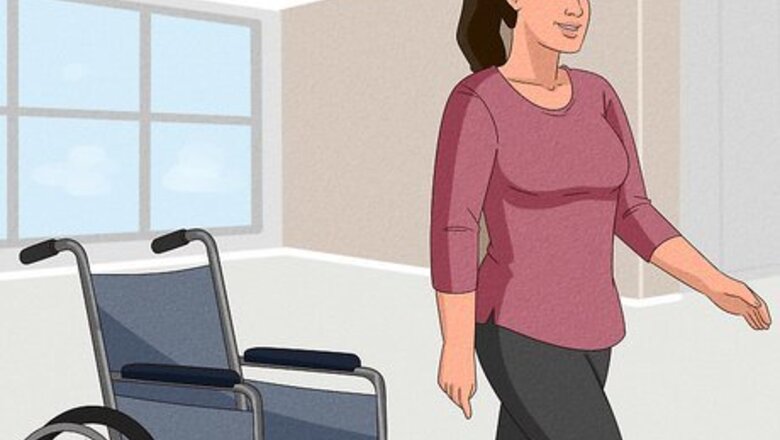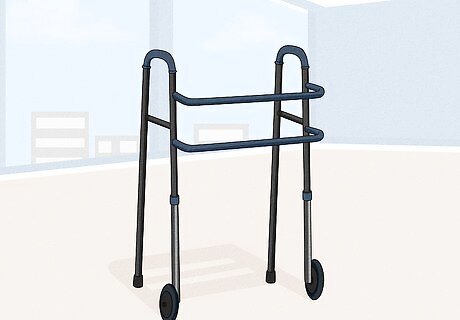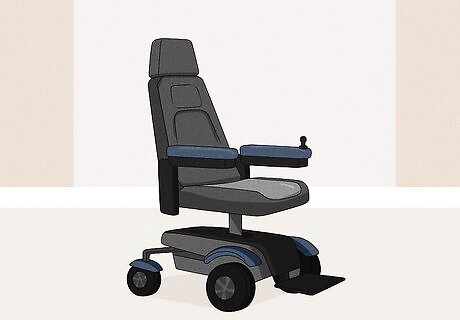
views
- An ambulatory wheelchair user is someone who can sometimes walk without support, but often needs a wheelchair to help them get around.
- Ambulatory wheelchair users often face discrimination and judgment, because people believe they are “faking” or exaggerating their disability.
- When you interact with someone in a wheelchair, avoid making assumptions or judgements about why they’re using a mobility aid.
What is an ambulatory wheelchair user?

An ambulatory wheelchair user can sometimes walk without support. Because of TV shows and movies, many of us assume that anyone in a wheelchair is fully paralyzed (or at least paralyzed from the waist down). However, that’s not always the case—many people who use wheelchairs only need them the majority of the time or some of the time. This is why you might see a wheelchair user moving their legs or standing up to walk for short periods of time. “Ambulatory” means “related to walking,” which is why people who can technically walk without support are called “ambulatory wheelchair users.” Many ambulatory wheelchair users face stigma and judgment in the world. People often assume that they cannot walk at all since they’re using a wheelchair, and then judge them when they see them walking unassisted. While there are many reasons someone might be using a wheelchair, an ambulatory wheelchair user might have chronic pain, unstable joints, unsteady balance, intense fatigue, or lower body injuries.
Is it okay to ask someone why they’re in a wheelchair?

No, it’s usually not polite to ask someone why they’re in a wheelchair. There are lots of reasons why someone might be using a wheelchair, and a stranger or acquaintance (or even a friend) might not want to share that with you. When you’re interacting with a person who uses a wheelchair, avoid bringing up their mobility device unless they talk about it first. If you’re getting to know a close friend, then it may be more acceptable to talk about why they use a wheelchair. However, try not to make them feel uncomfortable, and don’t keep asking them tons of questions if it seems like they don’t want to share.
Interacting with Someone in a Wheelchair

Speak directly to the person in a wheelchair. Sometimes, people in a wheelchair will have a family member or companion with them when they’re out and about. If you’re talking directly to a person in a wheelchair, look at them, not with the person next to them. Make eye contact and treat them like a human being, just like you would with anyone else. Remember, a person in a wheelchair is just a person! You probably wouldn’t like to be overlooked, so don’t look over them, either.

Ask permission before touching their wheelchair or other mobility aid. Even if you’re offering to help, get consent from the person in a wheelchair before touching them or their chair. Since most people rely on their wheelchairs and mobility aids to get around, it can be uncomfortable for a stranger or acquaintance to touch it without asking. Say something like, “Need any help with that?” or, “Want me to get the door for you?” If they say no, respect their wishes and let them go about their business.

Don’t make any assumptions about why they’re in a wheelchair. There are lots of reasons why someone might be using a wheelchair, and not all of them are because the person is paralyzed. If you see a person who uses a wheelchair walking around or moving their legs, it doesn’t mean they’re “faking.” They may be an ambulatory wheelchair user who only uses a wheelchair part of the time.
Other Mobility Devices

Canes Canes come in many different shapes and sizes, but generally, they’re long wooden sticks that help people walk. You might see an ambulatory wheelchair user with a cane nearby to assist them when they stand up.

Walkers Walkers are similar to canes, but they’re more stable and provide all-over support. Walkers may also have wheels on the bottom; those are called “rollers.” In general, walkers are good for short-term use, while rollers are better for long-term use.

Power-driven wheelchairs Power-driven mobility aids rely on a battery to move the wheels and steer. Technically, “wheelchairs” are the ones you push by hand, while “power-driven wheelchairs” are the ones that have a throttle. Ambulatory wheelchair users may use one or both types of wheelchairs.


















Comments
0 comment